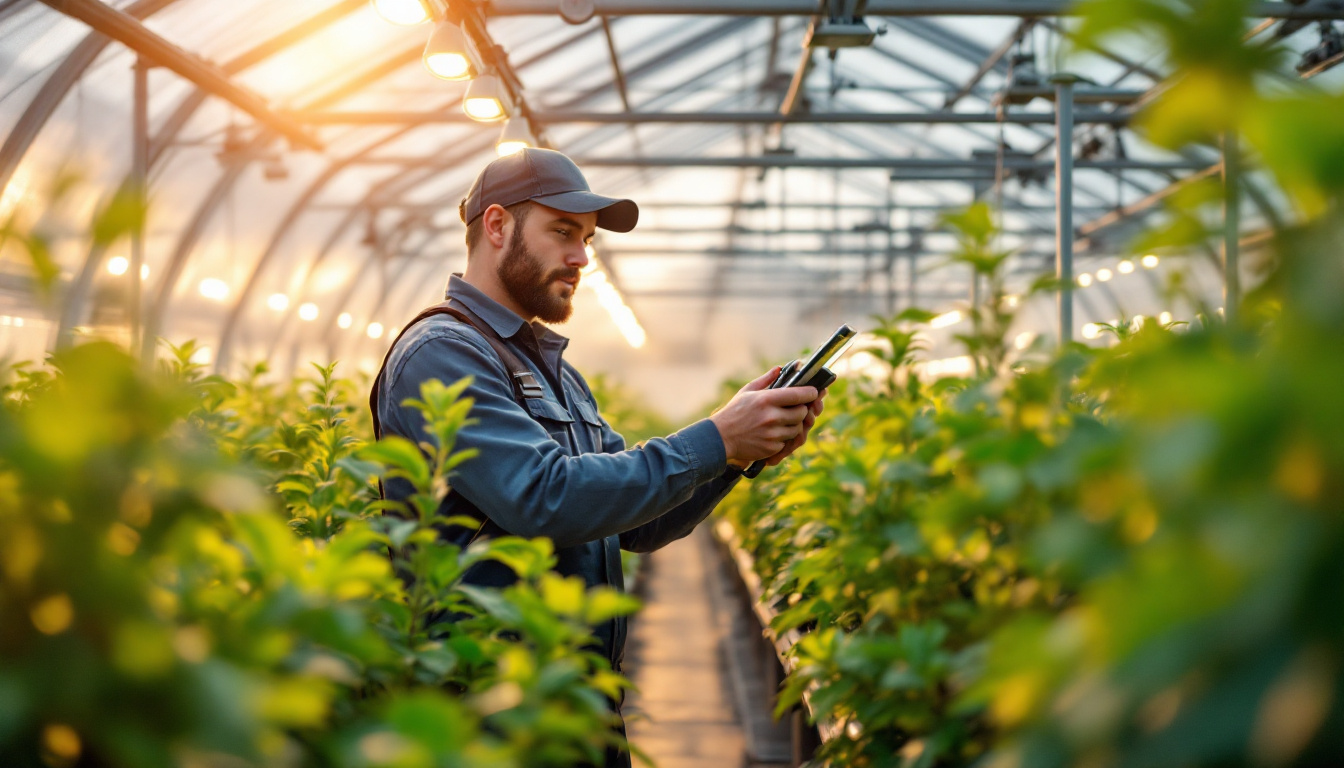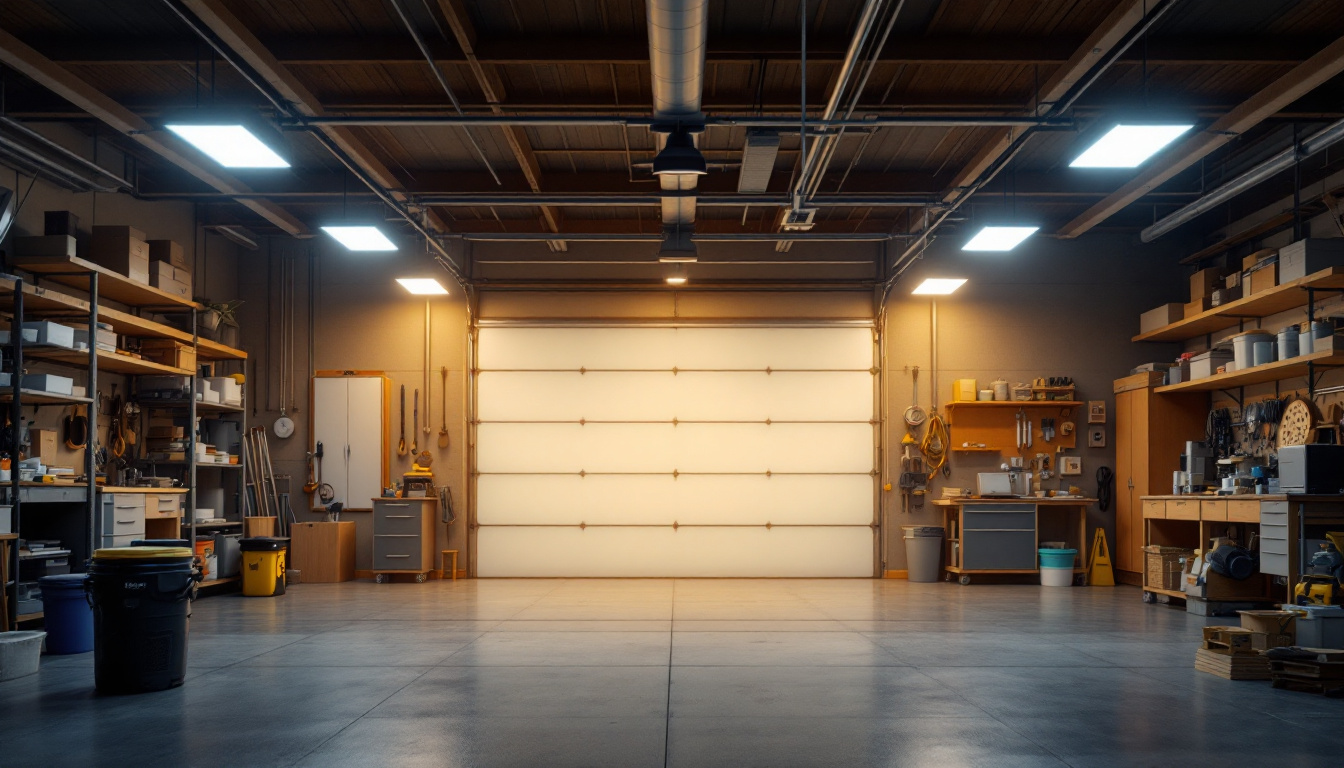

In the ever-evolving world of horticulture, lighting plays a pivotal role in ensuring optimal growth and yield for plants. For lighting contractors, understanding the nuances of grower choice in lighting systems is essential. This guide aims to provide valuable insights into the various aspects of lighting solutions tailored for growers, helping contractors make informed decisions that align with their clients’ needs.
Lighting is not merely an accessory in the realm of horticulture; it is a fundamental component that directly influences plant health and productivity. Different stages of plant growth require varying light spectrums, intensities, and durations. Therefore, selecting the right lighting solution can significantly impact crop yield and quality.
Photosynthesis is the process by which plants convert light energy into chemical energy, and it is heavily dependent on the light spectrum. Plants primarily utilize blue and red wavelengths for growth. Blue light promotes vegetative growth, while red light is crucial for flowering and fruiting. Understanding these requirements enables contractors to recommend lighting systems that cater to specific plant needs. Moreover, the introduction of full-spectrum LED lights has revolutionized horticultural practices, as these lights mimic natural sunlight, providing a balanced spectrum that can enhance photosynthesis across various plant types. This versatility not only supports optimal growth but also allows for the cultivation of a wider range of plants in controlled environments.
Different growth stages of plants necessitate distinct lighting conditions. Seedlings thrive under lower light intensities, while mature plants may require higher intensities to support their growth. Lighting contractors should be well-versed in these requirements to provide tailored solutions that promote healthy plant development throughout their lifecycle. For instance, during the germination phase, a gentle light source can prevent seedlings from becoming leggy, while transitioning to more intense lighting as plants mature can stimulate robust growth and enhance overall vigor. Additionally, the duration of light exposure, often referred to as photoperiod, plays a crucial role in regulating flowering and fruiting cycles, making it essential for growers to monitor and adjust lighting schedules to align with the specific needs of their crops.
With advancements in technology, various types of grow lights are available on the market. Each type has its advantages and disadvantages, making it essential for contractors to understand these differences to guide their clients effectively.
LED grow lights have gained immense popularity due to their energy efficiency and long lifespan. They emit specific wavelengths that can be tailored to the needs of different plants, making them versatile for various applications. Additionally, LEDs produce less heat, reducing the risk of plant damage and minimizing cooling costs in indoor environments. Many modern LED systems also come equipped with adjustable spectrums, allowing growers to switch between different light settings depending on the growth stage of the plants. This adaptability not only enhances growth rates but also improves the overall quality of the harvest, making LED lights a preferred choice for both hobbyists and commercial growers alike.
HID lights, including Metal Halide (MH) and High-Pressure Sodium (HPS) lamps, have been traditional favorites among growers. MH lamps are known for their blue light output, ideal for vegetative growth, while HPS lamps emit more red light, promoting flowering. However, they consume more energy and generate more heat than LEDs, which can lead to higher operational costs. Despite these drawbacks, many growers appreciate the high light intensity and penetration that HID lights offer, especially in larger growing spaces. Furthermore, with the addition of reflectors and proper ventilation systems, HID setups can be optimized to mitigate heat issues, allowing for a successful growing environment even in challenging conditions.
Fluorescent lights, particularly T5 and T8 tubes, are often used for seedlings and clones due to their low heat output and adequate light coverage. While they may not provide the same intensity as HID or LED lights, they are cost-effective and suitable for smaller operations or as supplemental lighting in larger setups. Additionally, fluorescent lights are available in various color temperatures, which can influence plant growth and development. For instance, cool white bulbs are often favored for vegetative stages, while warm white bulbs can enhance flowering. Their lightweight design and ease of installation make them a practical choice for growers looking to create a flexible and efficient lighting system without the complexity of more advanced technologies.
When working with growers, understanding their specific needs is crucial. Factors such as the type of crops being cultivated, the size of the growing area, and the available budget all play a role in determining the best lighting solution.
Different crops have varying light requirements. For instance, leafy greens may thrive under lower light conditions, while fruiting plants like tomatoes and peppers require more intense light. Contractors should engage in discussions with growers to ascertain the types of crops they are cultivating, which will guide the selection of appropriate lighting systems. Additionally, seasonal variations can affect light needs; for example, during the winter months, growers may need to supplement natural light with artificial sources to maintain optimal growth rates. Understanding these nuances allows for a more tailored approach to lighting solutions, ensuring that each crop receives the specific wavelengths and intensity it requires for photosynthesis and overall health.
The physical layout of the growing area significantly impacts lighting choices. Vertical farms, greenhouses, and indoor grow rooms each have unique spatial constraints. Understanding these layouts allows contractors to recommend lighting solutions that maximize coverage and efficiency, ensuring that every plant receives adequate light. For instance, in vertical farming systems, where space is at a premium, utilizing adjustable or modular lighting fixtures can help optimize light distribution across multiple layers of crops. Furthermore, considerations such as the height of the plants and the arrangement of growing beds can influence the type and positioning of lights, making it essential for contractors to conduct a thorough assessment of the growing environment before making recommendations.
Budget considerations are often a determining factor in the selection of lighting systems. While high-efficiency systems like LEDs may have a higher upfront cost, their long-term energy savings can make them more economical over time. Contractors should provide growers with a comprehensive analysis of the initial investment versus potential operational savings to help them make informed choices. Additionally, exploring financing options or incentives for energy-efficient upgrades can alleviate some of the financial burden on growers. It’s also important to consider the maintenance costs associated with different lighting technologies, as some systems may require more frequent replacements or repairs, impacting the overall budget in the long run. By presenting a well-rounded financial overview, contractors can empower growers to make decisions that align with both their immediate needs and future growth aspirations.
Once the appropriate lighting system has been selected, proper installation is essential to ensure optimal performance. Lighting contractors should adhere to best practices to maximize the effectiveness of the grow lights.
The height and placement of grow lights can significantly affect light distribution and intensity. Lights should be positioned at an appropriate distance from the plants to prevent light burn while ensuring adequate coverage. Contractors should also consider the specific light requirements of different plants when determining placement.
Proper electrical setup is crucial for the safe operation of grow lights. Contractors must ensure that the electrical system can handle the load of the lighting fixtures and that all wiring complies with local regulations. Additionally, incorporating timers and dimmers can enhance control over light cycles, further optimizing plant growth.
Regular maintenance of lighting systems is essential to ensure longevity and consistent performance. Contractors should educate growers on maintenance practices and common troubleshooting techniques.
Dust and debris can accumulate on light fixtures, reducing their efficiency. Regular cleaning of the fixtures and inspection of electrical components can prevent issues before they arise. Contractors should recommend a maintenance schedule to growers, ensuring that their lighting systems remain in optimal condition.
Growers may encounter issues such as uneven growth, discoloration of leaves, or stunted development, which can be indicative of lighting problems. Contractors should be prepared to assist growers in diagnosing these issues and recommending solutions, whether it involves adjusting light intensity, changing the light spectrum, or altering the duration of exposure.
The horticultural lighting industry is continuously evolving, with new technologies and trends emerging regularly. Staying informed about these developments can give contractors a competitive edge.
Smart lighting systems equipped with sensors and automation technology are gaining traction in the horticultural sector. These systems can adjust light intensity and spectrum based on real-time environmental conditions, optimizing plant growth while minimizing energy consumption. Contractors should explore these options to offer cutting-edge solutions to their clients.
As the agricultural landscape becomes increasingly interconnected, integrating lighting systems with other technologies, such as climate control and nutrient delivery systems, is becoming more common. This holistic approach can enhance overall plant health and yield, making it an attractive option for growers.
Lighting is a critical aspect of successful horticulture, and understanding the choices available is essential for lighting contractors. By familiarizing themselves with the various types of grow lights, evaluating grower needs, and adhering to best practices in installation and maintenance, contractors can provide invaluable support to their clients. As the industry continues to evolve, staying abreast of trends and technological advancements will further enhance the ability to deliver effective lighting solutions that promote healthy plant growth and maximize yields.
Ultimately, the goal of every lighting contractor should be to empower growers with the knowledge and tools they need to succeed. By fostering strong relationships and providing tailored solutions, contractors can play a vital role in the thriving world of horticulture.
Ready to elevate your horticultural lighting solutions? At LumenWholesale, we provide lighting contractors with the highest quality, spec-grade grow lights at unbeatable wholesale prices. Our commitment to cutting out the middleman means you get access to superior products without the inflated markups, ensuring every project shines with reliability and high performance. With our expansive selection, free shipping on bulk orders, and a dedication to affordability and convenience, LumenWholesale is your go-to source for premium lighting. Don’t compromise on quality or cost—choose LumenWholesale for Wholesale Lighting at the Best Value and make your next horticultural project a glowing success.

Discover how 10 pack linkable shop lights are revolutionizing the lighting industry with their versatility, energy efficiency, and ease of installation.

Discover the essential guide for lighting contractors on selecting the perfect fluorescent light ballast.

Discover how Type T Lamps can revolutionize your lighting projects and give you a competitive edge in securing more contracts.

Discover essential insights and expert tips for lighting contractors on selecting and installing electrical outdoor boxes.
Get notified when NEW deals are released.
Optimize your budget with wholesale discounts.
Only top-quality, specification-grade lighting products.
No additional costs at checkout - what you see is what you pay.
We understand the unique needs of contractors.